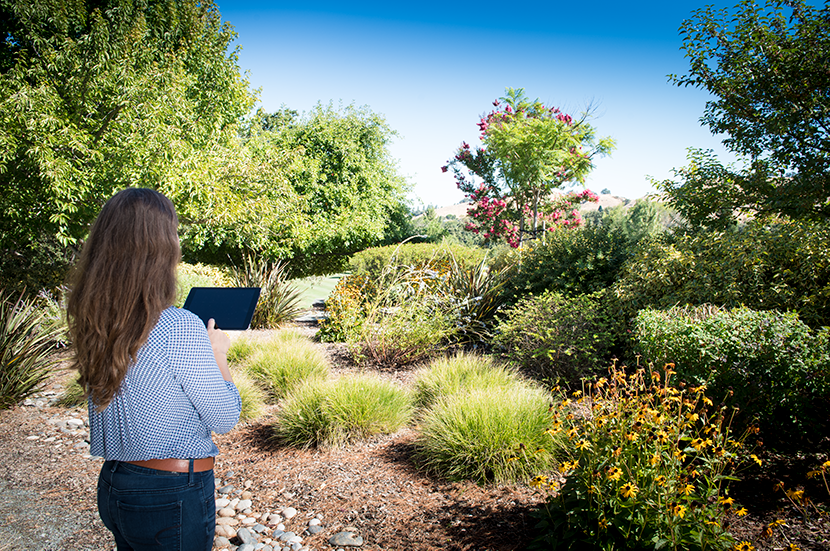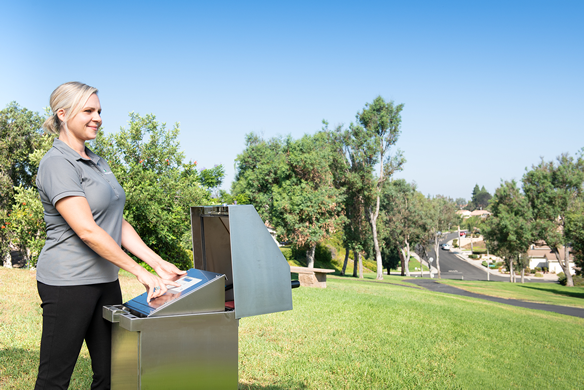5 Reasons Why You Need a Smart Controller
By Richard Restuccia
(This article originally appeared in the 2022 July/August edition of California Garden)
The United States Environmental Protection Agency (EPA) estimates in the Southwestern United States that, 60 percent of total water use is for outdoor purposes, and typically 50 percent of that water is wasted due to inefficient watering systems and methods. We live in a time when water is no longer cheap or plentiful, and consumers need to take steps to manage water more efficiently. The best first step you can take to reduce your outdoor water use is purchasing a smart irrigation controller to water your landscape.
1 - Smart Controllers make daily adjustments to the irrigation schedule based on evapotranspiration. Evapotranspiration (ET) is when water is transferred from the land to the atmosphere by evaporation from the soil and other surfaces and by transpiration from plants. The concept is to measure the amount of water used and evaporated daily and replace the water appropriately. How much water is lost to evapotranspiration and the proper times to replenish the water vary with the type of controller. Traditional controllers are typically programmed once a year, and then during specific times of the year (like spring, summer, fall, and winter) are adjusted down or up accordingly. A typical traditional controller receives four adjustments a year compared to a daily adjustment. Even if the adjustments to the traditional controller were made monthly, this would only be 12 adjustments per year. A smart controller makes an adjustment 365 time a year. This chart shows the potential for overwatering and the times of the year it is most prevalent, mainly the fall. Traditional controllers are adjusted up in July, the highest ET month of the year and are often not adjusted down until late October or November.


2 - Smart Controllers determine the proper watering schedule.Some weather adjusting controllers adjust a schedule that is manually entered. In other words, it appropriately adjusts the schedule based on the weather, but there is no saying that the original schedule it is adjusting is the right one. Starting with a scientifically determined schedule based on the plant type, soil type, sprinkler type, shade percentage, and if the plant is newly planted or well established saves a considerable amount of water because you have the proper schedule set initially and adjustments are made on a scientifically calculated schedule. Select a smart controller that sets an initial schedule for you.

Using an iPad, making water adjustments in the field to a smart controller.
(Michael Derwenko)
3 - Smart Controllers Use Rain To Your Advantage– A smart controller should anticipate rainfall and turn the water off if rain is detected or predicted. True predictive analytics are only found in the smartest controller. Consider it a smart controller with a Ph.D., if you will. The controller goes from reactive adjustments—responding to today’s weather—to pro-active adjustments where we incorporate tomorrow’s weather into today’s schedule. For example, with predictive analytics, we reduce watering today if rain is on the way tomorrow and save your turf by watering extra today if tomorrow is extremely hot. In addition, ensure your smart controller includes rainfall for your irrigation schedule adjustments and adjusts for usable rain. For example, if you get 2 inches of rain in an hour, most of it runs off the landscape and is not used by your plants.

ET water Smart Controller mounted in a pedestal for security and longevity. (Michael Derwenko)
4 - Smart Controllers Stop Water Waste From Leaks– Some smart controllers can measure the amount of water flowing. This allows users to see in real-time how much water is being used. More importantly, some can sense high flow and shut a system down when the high flow is detected and send an alert, either via email or text message, to a technician to let them know there is a problem. Anyone who has experienced a high-water bill due to a water line break that went unnoticed for days understands the value of this feature.
5 - Smart Controllers Generate Valuable Water Use Reports – Smart controllers provide the ability to generate reports so you can analyze data to make better decisions about water management. For example, it is essential to know how much water you used this month. It is better to compare that with how much you used this same month last year. It is best to be able to make that comparison and include ET data for both months. Good reports allow you to make that comparison.
We are battling a more than 20-year megadrought in the West. The biggest challenge we have is not what we water but what controllers and irrigation devices we use to water the landscape. We have the technology available at reasonable prices to manage water better. However, the cost of water continues to escalate. It now costs (this varies depending on how you water) with a conventional irrigation system and traditional controller over $20K a year to water an acre of turf in San Diego. An investment in a smart controller will pay for itself in just a few years and help win the battle against water scarcity.
Richard is a UCCE Master Gardener, Vice President of Water Management Solutions at Jain Irrigation, and water management, evangelist. He believes passionately in water efficiency and sees the financial and social benefits far too often to keep a secret. Richard is a spokesperson at industry events and on the Hill to provide direction and insight on landscape water management best practices. Richard puts his words into action through service on various boards and committees. He founded and serves as editor of two blogs about sustainability and water conservation. He served on the Irrigation Association’s Board of Directors. Richard also writes for other publications and is an award-winning contributor to Lawn & Landscape Magazine. In 2014 his efforts were recognized with a “Leadership in Landscape” award. He has a great interest in the supply of clean water for people in developing countries and as an outdoorsman, spends his free time running, gardening, and surfing.

